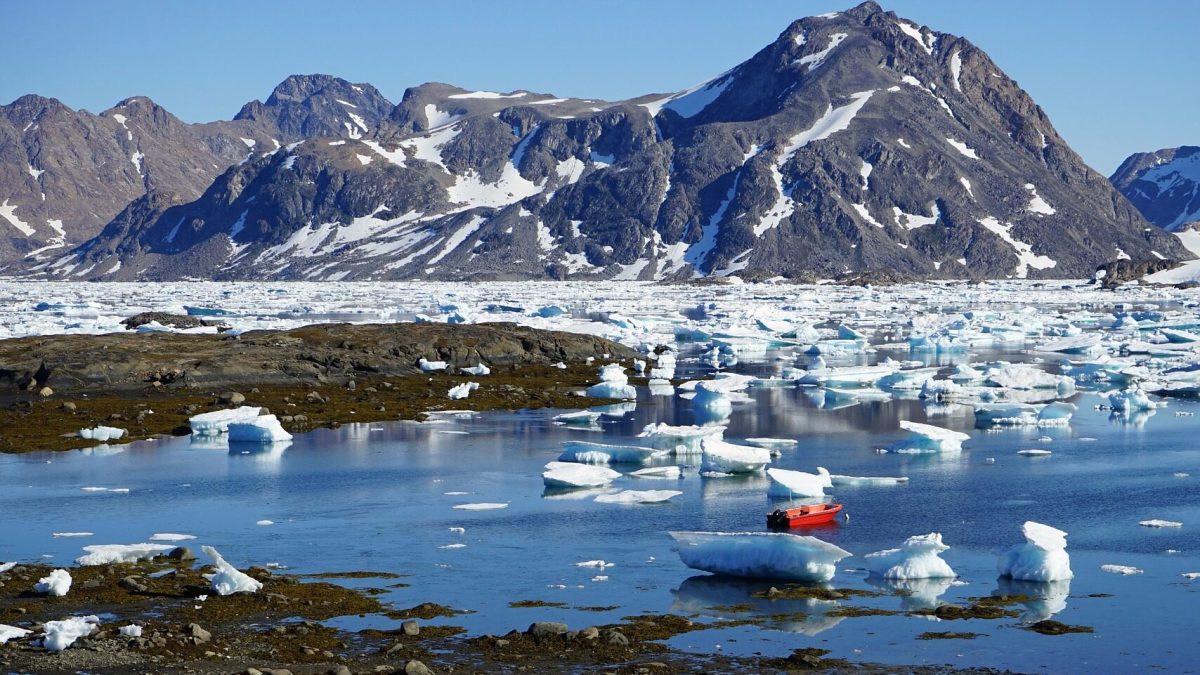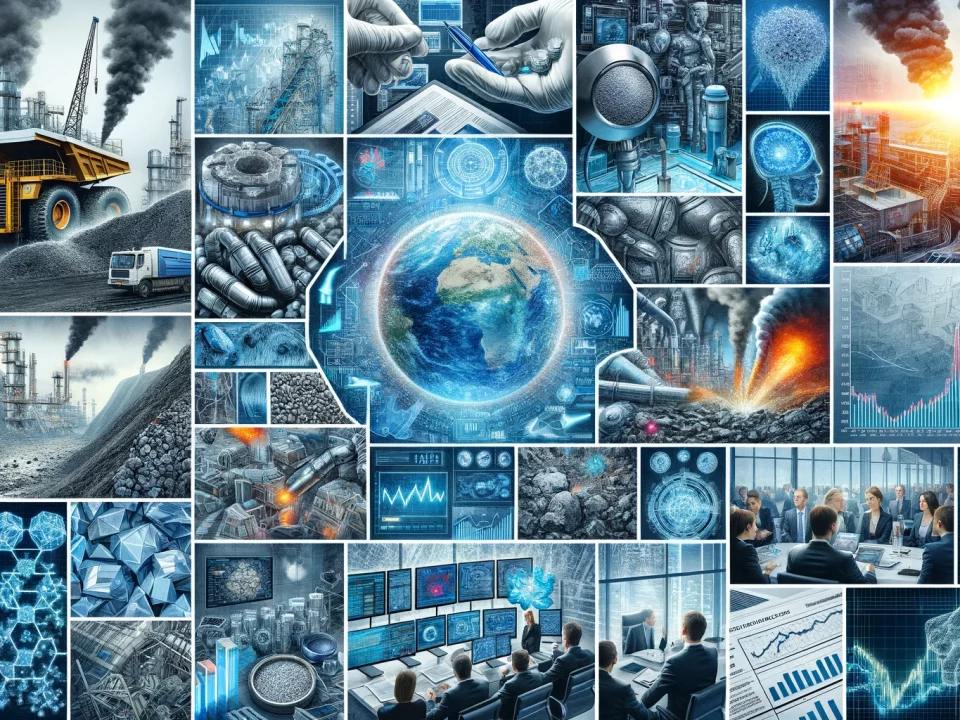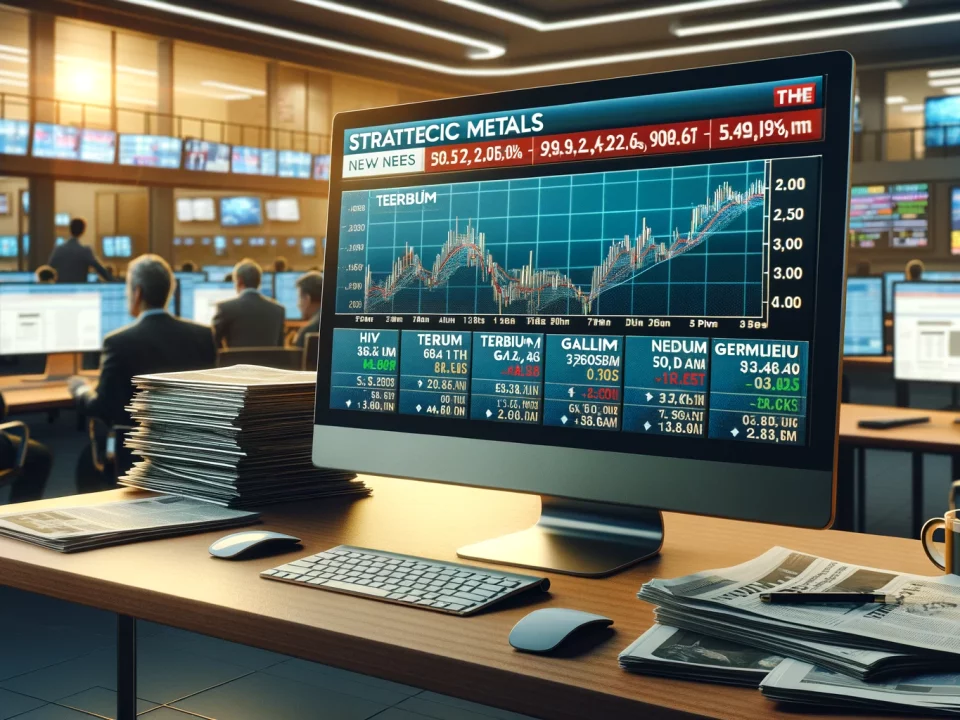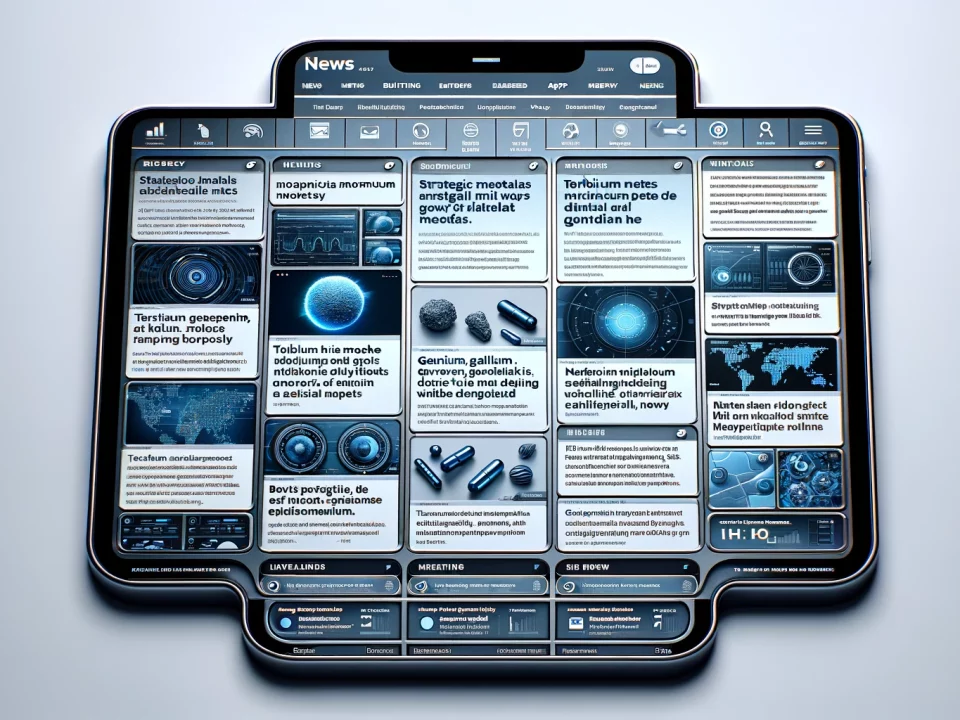
Weekly News Review January 13 – January 19 2025
January 19, 2025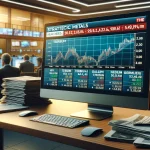
Weekly News Review January 20 – 26 2025
January 26, 2025While numerous rare earth deposits have been found on the world’s largest island, none are being mined.
President-elect Donald Trump recently made headlines for revisiting the idea of the United States acquiring Greenland, an autonomous territory of Denmark with ties to the European Union. While Trump had previously proposed purchasing the Arctic island during his first term as president in 2019, his renewed attempt garnered significantly more attention. Greenland’s strategic geographic location has made it a point of interest for the U.S. since the 1860s, and Trump is far from the first president to advocate for closer relations with the island. Notably, Nuuk, Greenland’s capital, is geographically closer to New York—the busiest port on the North American East Coast—than it is to Copenhagen, Denmark’s capital.
Why is the U.S. interested in Greenland?
Following an unsuccessful bid to purchase the island in 1946 under President Harry S. Truman, the U.S. opened a key military facility in Greenland’s north, the Pituffik Space Base, which observes missile and rocket launches in the northern hemisphere. Denmark sought U.S. support to defend the island following World War 2, and Greenland became a key asset for the U.S. during the Cold War. In addition, Greenland’s geographical position is one of its strategic strengths: The Arctic is warming at an accelerating pace, leading to more ice-free summers that freight ships can use to ship goods more efficiently. The Northwest Passage shipping lane runs along its coast, and the island is part of the Greenland-Iceland-United Kingdom gap, a strategic maritime region.
Greenland’s Mineral Wealth Beneath the Melting Ice.
However, more relevant could be what is below the ice and the island’s rocky surface—critical minerals. While Greenland’s mineral wealth has been known for quite some time, it has garnered further attention worldwide amid the rise of renewables and other high-tech fields. As an overseas territory of the European Union, it is unsurprising that the EU is keen on getting access to the resources and has signed multiple cooperation agreements with the island’s government. The recently enacted Critical Raw Materials Act aims to boost the European Union’s domestic mining, processing, and recycling capabilities. While minerals extracted in Greenland may not be considered domestic sources, they would contribute to achieving the fourth goal of the legislation: diversification. Currently, the EU, the U.S., and other Western nations rely heavily on imports of most critical minerals, with China being the leading supplier. Expanding access to resources from places like Greenland could reduce this dependence and enhance supply chain security.
Global Powers Vying for Influence.
However, interests range worldwide, from China to Australia and even India. While Indian companies have only voiced interest in Greenland’s resources, Australian companies Tanbreez and Energy Transition Minerals have already begun developing deposits, although they are on hold for various reasons. Canada-based Neo Performance Materials also owns a promising rare earth deposit in Greenland’s southwest, which is also suspended.
China’s interest in Greenland’s resources dates back to 2011 when a Greenlandic delegation visited the People’s Republic to promote investment in the island’s mining sector. This visit marked the beginning of a gradual increase in Chinese investments in Greenland. In subsequent years, Chinese delegations to Greenland explored opportunities for joint infrastructure projects, particularly in hydropower and mining, signaling China’s growing focus on securing access to critical raw materials.
In 2016, China’s interest in Greenland’s resources became more pronounced, with Shenghe Resources, one of China’s largest mining companies, acquiring 11.3 percent of Greenland Minerals stocks, later renamed Energy Transition Minerals. This acquisition was centered around the Kvanefjeld project, one of the world’s largest known reserves of rare earth elements and uranium.
Despite some setbacks, such as the failure of a 2018 proposal by China Communications Construction Company to build three airports in Greenland, Chinese companies have maintained significant interest in the island and its resources. Shenghe holds a stake in the Kvanefjeld project, emphasizing China’s ongoing focus on Greenland’s mineral wealth.
Other companies, like China National Offshore Oil Corporation (CNOOC), have also shown interest in the region’s energy resources, including oil and gas exploration. General Nice, another Chinese mining company, had its mining license for the Isua iron mine withdrawn by the Greenlandic government in 2021.
These investments illustrate China’s long-term strategy to diversify its sources of critical raw materials and enhance its influence in the Arctic region. While the West seeks to capitalize on Greenland’s minerals and diversify supply chains away from China, companies from the People’s Republic are already on the island, either as developers or shareholders.
This has raised geopolitical concerns, particularly regarding the potential for increased Chinese influence in Greenland. For example, according to the company’s CEO, the U.S. reportedly lobbied rare earth developer Tanbreez not to sell to Chinese-linked firms in 2024.
Current Rare Earth Mining Projects in Greenland.
Looking beyond politics, what rare earth deposits are developing in Greenland? While dozens of deposits are known, only three are currently in the advanced stages of development, with resource estimates and test work completed. However, logistics, mineralogy, and the harsh climate present significant challenges for other deposits to become economically viable. Likewise, the three advanced projects have faced numerous obstacles and challenges associated with their location in the high north.
Kvanefjeld
The Kvanefjeld (or Kuannersuit) deposit in the South of Greenland was first discovered in 1956. Its initial development focused on its uranium content, estimated to be among the world’s largest deposits. However, the Danish government, which governed Greenland until the late 1970s, ultimately decided against developing the project further. Kvanefjeld laid dormant until Australian company Greenland Minerals secured an exploration license for the area in 2007.
Over the following years, Greenland relaxed its mining regulations, opening up the possibility for the company to develop an open pit mine at Kvanefjeld, which saw its chance and applied for a mining license in 2015. At the Greenland general election in 2021, the proposed mine, which still focused on uranium then, became a central topic. The newly elected government coalition opposed uranium mining and banned all related exploration efforts.
Since then, the project has ultimately been on hold, with Greenland Minerals shifting its attention to rare earth elements, as Kvanefjeld is considered the second-largest rare earth deposit in the world, with estimations quantifying the deposit to contain 6.6 million tons of rare earth oxides. However, the deposit’s rare earth-bearing mineral is steenstrupine, which contains uranium and thorium. Extracting rare earths from Kvanefjeld thus hinges on the Greenlandic moratorium on uranium mining. In 2022, the company renamed itself Energy Transition Minerals and began advocating for a shift in Greenlandic politics.
Despite their efforts, the Kvanefjeld project remains in limbo. The company has sought compensation for the governmental blockade on rare earth and uranium mining and continues to press for the lifting of restrictions. In May 2024, Shenghe still held 9.21 percent of the company’s shares, signaling the ongoing international interest in the project’s resources.
Kringlerne
Another rare earth deposit is less than 16 kilometers from Kvanefjeld: the Kringlerne project. The Australian company Tanbreez conducted initial exploration, which derived its name from the materials contained in the deposit, namely tantalum, niobium, rare earth elements, and zirconium. The project has some advantages over its neighbor as there is less radioactive material like uranium or thorium in the deposit, and it is slightly closer to the shore, facilitating the export of raw materials via ship.
The deposit is estimated to contain roughly five million tons of rare earth oxides and four times that much zirconium dioxide. However, most of the contained oxides are of the less valuable cerium and lanthanum, with a smaller share of neodymium and other rare earths needed for magnet production. Thus, despite having some benefits over other deposits and even receiving a mining license in 2020, the project has not yet entered production. Political opposition and environmental hurdles prompted the company to sell its assets to U.S.-based miner Critical Metals Corp. in early 2025, a deal that will be completed later this year.
However, analysts have cast doubt over the project’s viability. The consultancy Project Blue cited the complex mineralogy of the Kringlerne deposit, arguing that the chance of the project entering commercial production would be low. The main rare earth-hosting mineral in the deposit is eudialyte. The concentration of rare earths in this type of mineral is comparatively low, and extraction is complex, making it more cost-intensive than other forms.
Sarfartoq
Further to the Northwest is a third rare earth project in development, the Sarfartoq deposit. Canada-based Neo Performance Materials acquired an exploration license from the previous owner, Hudson Resources, in 2023. With the raw materials mined at the project, Neo plans to supply the rare earth refinery its affiliate Silmet operates in Estonia. However, little large-scale exploration has been done following the acquisition.
The deposit 200 kilometers north of Nuuk is estimated to contain 214,200 tons of rare earth oxides, with a sizeable share of neodymium and praseodymium. However, the rare earth-bearing minerals, mainly bastnäsite, monazite, synchysite, and zhonghuacerite, are correlated with the radioactive elements thorium and uranium. This also puts the project at the peril of the uranium mining ban in Greenland.
What Deposits Exist Beyond These Examples?
In addition to these three examples, Greenland is home to numerous other rare earth-hosting deposits, particularly in its coastal regions to the south and West. Besides some geological scoping and test works, little exploration has been done there. For example, at the Motzfeldt Sø deposit, limited drilling has been conducted, but more work needs to be done to evaluate the rare earth potential fully. No resource estimation was made here. The mineralization further inland remains largely unexplored and poorly understood due to the vast ice shield. However, some researchers believe nothing but bedrock is below the ice due to its massive weight and erosion.
Only One Active Mine on the Island – No Rare Earth Project.
There is only one active mine in Greenland, and it does not extract rare earths. Since Greenland Ruby’s Aappaluttoq gemstone project shut down in 2023, the White Mountain, anorthosite venture in Western Greenland, is the only operational mine on the island. Anorthosite contains aluminum-rich silicate minerals, making it a possible alternative to bauxite, the most common aluminum source. Beyond its potential in aluminum production, anorthosite has various applications, including as a precursor for construction materials and in decorative uses due to its attractive appearance and durability. However, the island currently plays no role in rare earths.
Having the Resources Is Still a Long Way From Production.
Bringing a mine to the operational stage involves a complex and time-consuming process. Initially, a company must apply for a prospecting license to conduct preliminary surveys and identify potential mineral deposits. This license allows the company to conduct initial exploration activities if granted. Once promising deposits are identified, the company must secure an exploration license, permitting more detailed testing, including drilling, mapping, and comprehensive sampling. During this phase, the company also evaluates the project’s environmental, economic, and overall feasibility. If the results are favorable, the company can apply for a mining (or exploitation) license, which grants the right to extract raw materials on a large scale, marking the final step before full-scale mining operations begin.
Greenland’s Resources Are Not the Solution to Every Problem.
Harnessing Greenland’s resource potential is promising, but several significant challenges impede large-scale development. Only one mine is operational, extracting anorthosite rather than rare earth elements. While Greenland’s rare earth deposits hold great potential, environmental concerns and shifting policies have slowed progress.
Furthermore, the island’s complex geology and harsh logistical conditions—icy, rocky terrain—pose considerable obstacles for mining companies. Even though regions like Europe and the U.S. could benefit from raw materials sourced in Greenland, the gap lies in the lack of processing capacity to transform these raw materials into intermediate goods and finished products, such as magnets.
With the Mountain Pass mine, the U.S., for example, has one of the largest operating rare earth mines outside China. However, the raw materials are not processed in the country due to a lack of the necessary refining capacities. While MP Materials and fellow miner Lynas are building processing facilities in Texas, these are still under construction and will not be operational for some time. In the interim, the U.S. will remain reliant on imports.
Meanwhile, Greenland’s Prime Minister Mute B. Egede has signaled openness to partner with the U.S. in mining. However, he also emphasized that the Greenlandic people do not want to become Americans or wish to be Danish. “This is the first time Greenland has been listened to intensely,” he remarked at a recent press conference. “We need to be calm, take advantage of things, and stand together. “By doing so, Egede sent a clear message to the world: Greenland and its people do not wish to be subjects of discussion but instead active participants.
This vision is often overlooked in the media covering Greenland’s resources, which tends to emphasize other nations’ potential rather than the Greenlandic people’s aspirations. Egede’s stance aligns with two of the guiding principles outlined by the United Nations Panel on Critical Energy Transition Minerals: mining and mineral ventures must benefit all stakeholders, and investments and trade must adhere to principles of responsibility and fairness.
Greenland’s government aims to assert itself more prominently in the global dialogue by directly addressing this issue, securing a stronger position and greater leverage than in the past.
Sources on the Geological Data:
Center for Minerals and Materials Geological Survey of Denmark and Greenland:
https://data.geus.dk/pure-pdf/MiMa-R_2015_02.pdf
https://eng.geus.dk/media/13316/go20.pdf
EURARE Project:
https://www.eurare.org/countries/greenland.html
ScienceDirect:
Greenland Minerals Authority:
https://govmin.gl/exploration-prospecting/get-an-exploration-licence/geological-data



